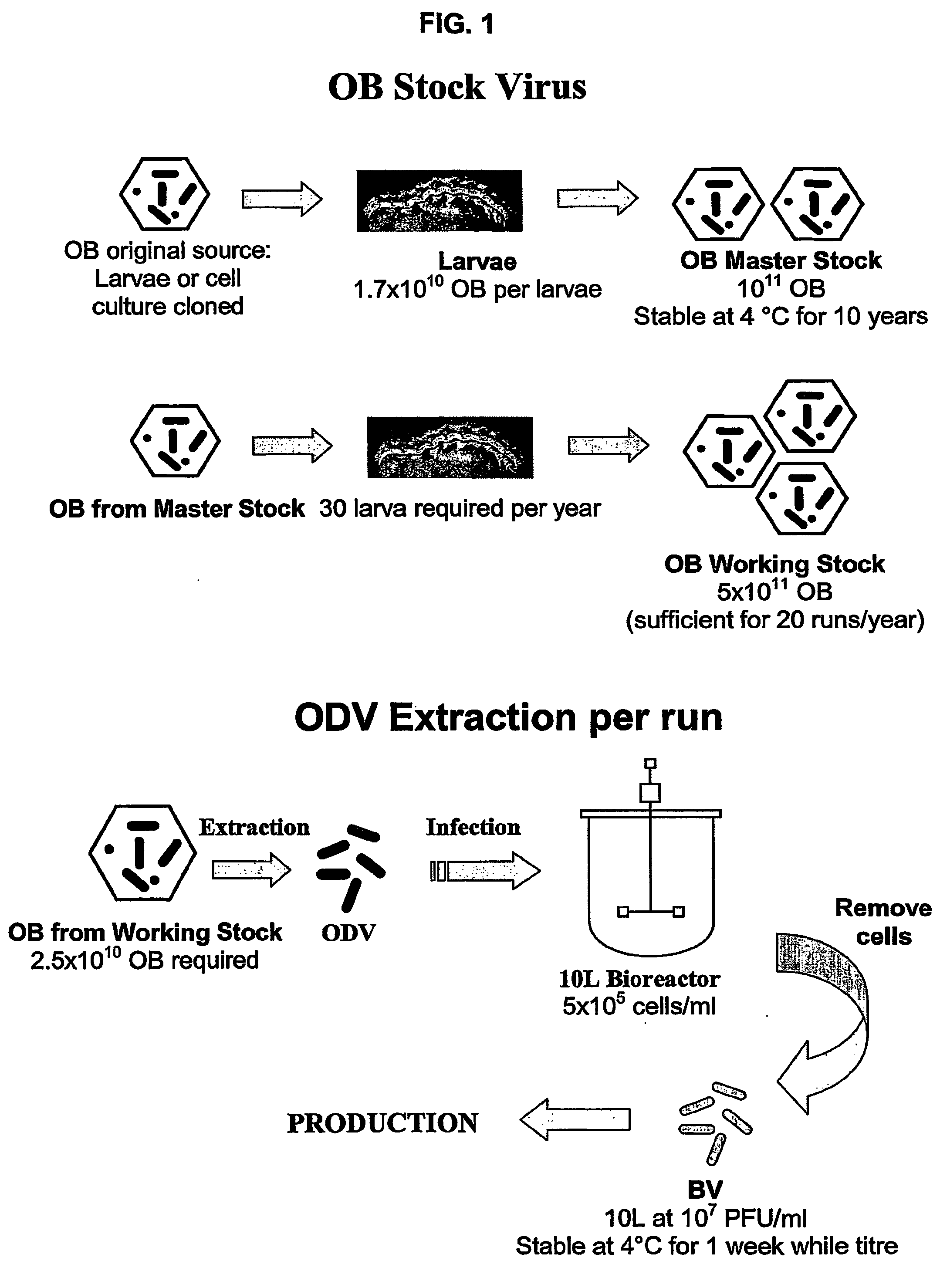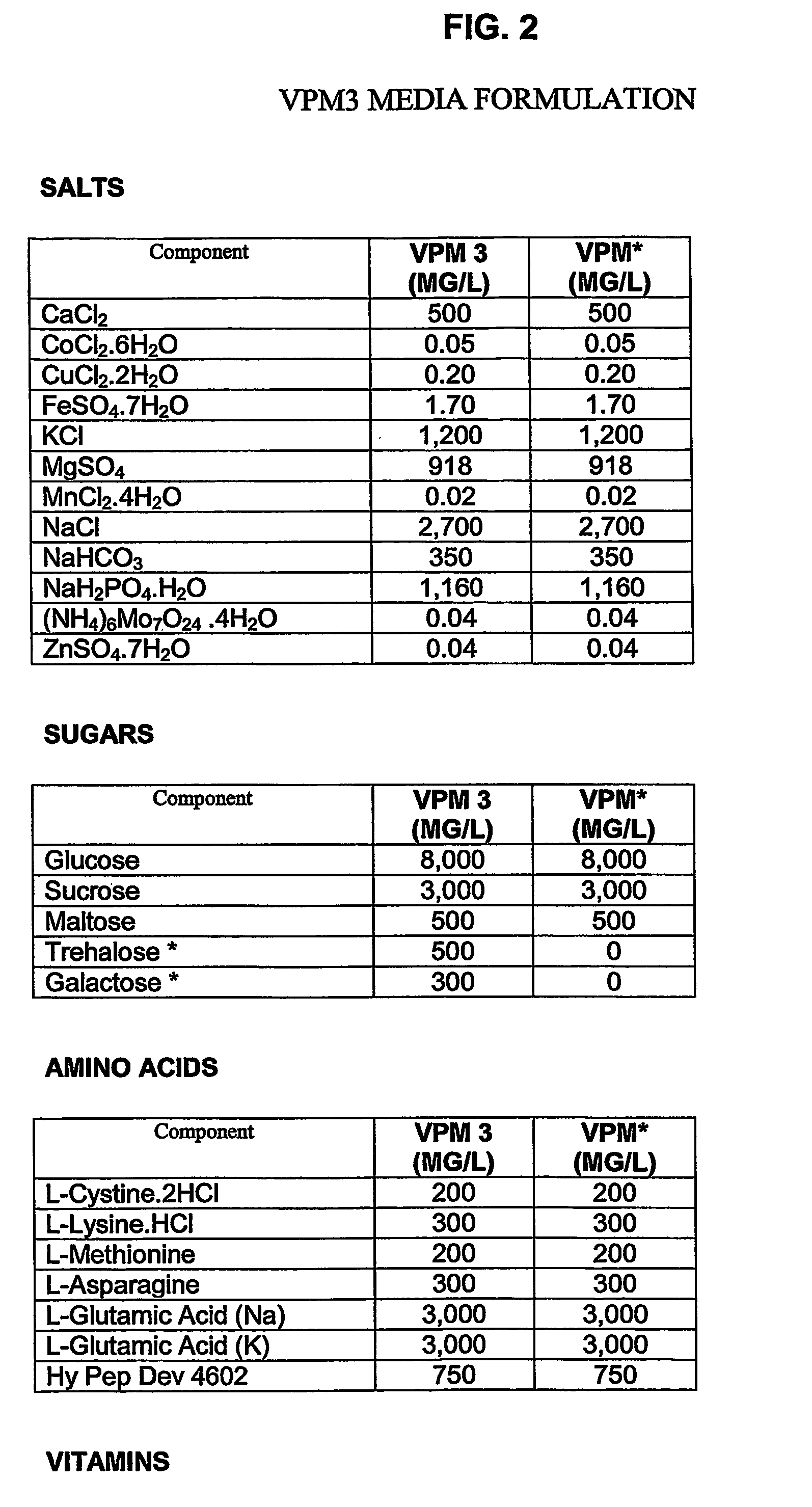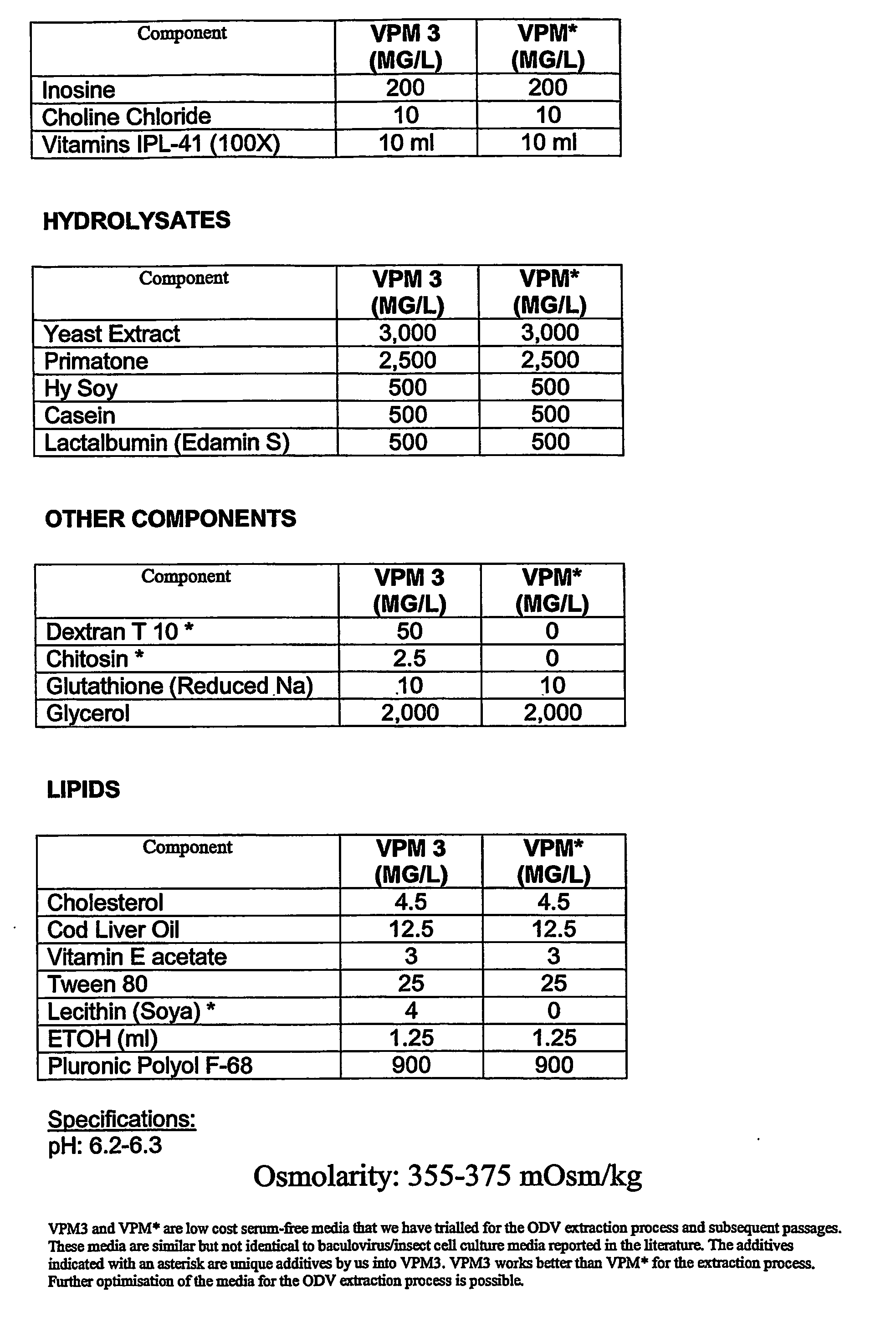Method of Producing Baculovirus
a technology of baculovirus and baculobacterium, which is applied in the direction of viruses/bacteriophages, dsdna viruses, recovery/purification, etc., can solve the problem of inability to produce large amounts of infectious baculovirus, baculoviruses that are not stable during serial passaging in cell culture, and a greater threat to the scale-up of a production process, so as to achieve economic production
- Summary
- Abstract
- Description
- Claims
- Application Information
AI Technical Summary
Benefits of technology
Problems solved by technology
Method used
Image
Examples
Embodiment Construction
[0031] The preferred embodiment of the method for producing large quantities of baculovirus involves a two step process of initially producing virus in caterpillar larvae and then using occlusion derived virus from a caterpillar larvae to inoculate a cell culture and allow a limited number of serial passages of the cell culture (see FIG. 1).
[0032] The method initially involves preparing master and working stocks of caterpillar larvae occlusion bodies. The master and working stocks of caterpillar OB are prepared by feeding large Helicoverpa armigera larvae approximately 1,000 OB each. As they die (6-10 days post infection) they are collected and stored at 4° C. Approximately 1.5-2 larvae are required for a 10 litre (passage 1) inoculum as 2.5×1010 OB are required per run and approximately 1.7×1010 OB are produced per larvae. After a sufficient number of dead caterpillars are pooled, they are extracted with SDS (30 minutes, 0.5% final concentration), homogenized (blender process), fi...
PUM
| Property | Measurement | Unit |
|---|---|---|
| volume | aaaaa | aaaaa |
| volume | aaaaa | aaaaa |
| volume | aaaaa | aaaaa |
Abstract
Description
Claims
Application Information
 Login to View More
Login to View More - R&D
- Intellectual Property
- Life Sciences
- Materials
- Tech Scout
- Unparalleled Data Quality
- Higher Quality Content
- 60% Fewer Hallucinations
Browse by: Latest US Patents, China's latest patents, Technical Efficacy Thesaurus, Application Domain, Technology Topic, Popular Technical Reports.
© 2025 PatSnap. All rights reserved.Legal|Privacy policy|Modern Slavery Act Transparency Statement|Sitemap|About US| Contact US: help@patsnap.com



